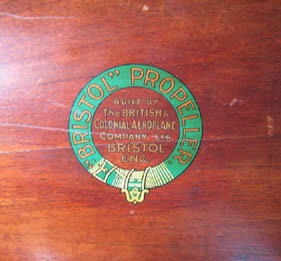Hi Guys,
I have and old British&Colonial propeller in original unrestored condition, I know I shouldn't restore it(becouse of history and economy value) and I don't want to do this but would like to preserve it if it's possible, I've read that warm water with soap is an option to clean the surface, but is it safe to do this on maker's decal? I think it's quite delicate piece and I'm not sure it's good idea.
The Second thing, is using beewax, but pure or with terpentine?? I think I'll have more question about that but I prefer to ask You Guys, than making experiments.
I have and old British&Colonial propeller in original unrestored condition, I know I shouldn't restore it(becouse of history and economy value) and I don't want to do this but would like to preserve it if it's possible, I've read that warm water with soap is an option to clean the surface, but is it safe to do this on maker's decal? I think it's quite delicate piece and I'm not sure it's good idea.
The Second thing, is using beewax, but pure or with terpentine?? I think I'll have more question about that but I prefer to ask You Guys, than making experiments.

Comment